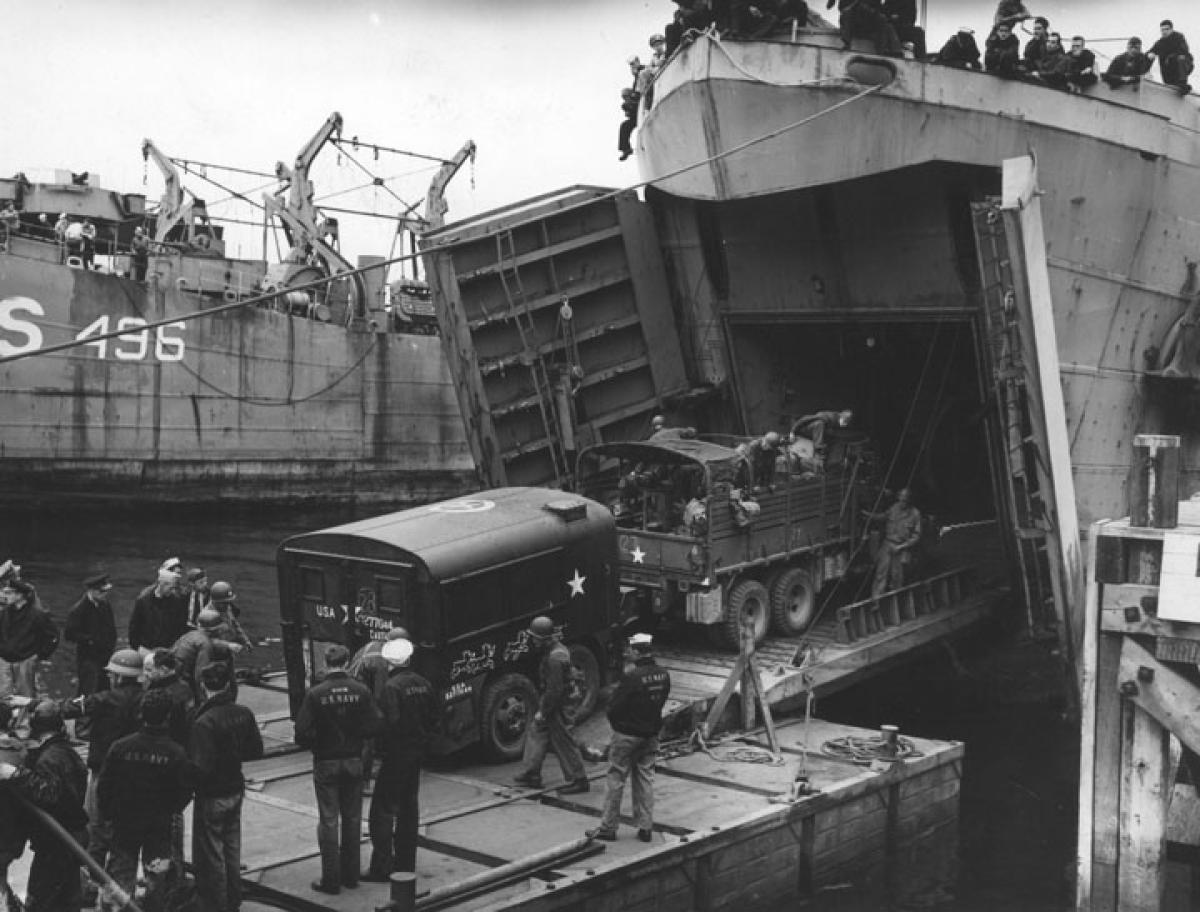About two weeks after D-Day, U.S. Navy Captain Harry “Savvy” Sanders, commander of Destroyer Squadron 18, recapped his experiences on 6 June 1944 in a letter to his friend Captain J. H. Chadwick. “The landing on Omaha beach was impeded by the failure of the air force to knock out mortars, light guns and machine gun nests,” he wrote.
With invading American soldiers pinned down by enemy fire, Sanders’ destroyers “closed the beach to within 800 to 1,000 yards and spent the day in knocking out these guns.” Adding a humorous note, Sanders said, “It was good fun to watch for gun flashes, put a couple of five inch salvos on the target and watch the Germans come running out with their hands stretched over their heads.”
Perhaps entertaining in retrospect, but as Craig Symonds explains in our cover story, “‘The Navy Saved Our Hides,’’ the destroyers’ D-Day task was daunting and dangerous—as well as critical to Allied success on Omaha Beach. The article is part of this issue’s package commemorating the 70th anniversary of the Normandy invasion, and its title is a quote from General Omar Bradley. He had contemplated evacuating Omaha and diverting all follow-up forces to other landing beaches before the “tin cans’” action inshore enabled U.S. troops to fight their way inland.
A second Symonds article, “Normandy’s Crucial Component,” considers the underappreciated LST. Ungainly and slow, the landing ships were poor sailers and often unloved by their crews, but as the author points out, their ability to land large numbers of troops, vehicles, and supplies directly on the beaches made them essential to invasion success. And in the weeks after D-Day they proved their worth.
Craig Symonds’ articles are excerpted from his new book, Neptune: The Allied Invasion of Europe and the D-Day Landings (Oxford University Press). Thousands of books have been written about the Normandy invasion, but unlike all but a handful, Symonds’ engaging, thoroughly researched Neptune focuses on naval aspects. It’s therefore an especially welcome addition to the history of what was the greatest amphibious undertaking of World War II.
In this issue’s third Normandy article, “Lost to Enemy Action,” U.S. naval officers vividly recount how their vessels were sunk on or shortly after D-Day. Readers interested in exploring the wreckage of ships, as well as aircraft and amphibious tanks, that went down during the invasion will want to watch D-Day’s Sunken Secrets, a two-hour NOVA special that premieres on PBS television stations on 28 May. And for a big—really big—invasion experience, there’s D-Day: Normandy 1944, an IMAX 3D movie produced by N3D Land Films and narrated by Tom Brokaw. To learn more, view a trailer, and find out where it’s showing, go to www.dday-normandy1944.com.
In Normandy waters 80 years before D-Day, the Kearsarge and Alabama fought the Civil War’s most celebrated wooden-ship duel. “‘Victory Has Perched on Our Banners,’” edited by Norman Delaney, features excerpts from Union sailor James Lee’s previously unpublished journal recounting life in the Kearsarge and her historic battle. What make Lee’s account shine are its unvarnished details—including shipmates getting uproariously drunk while in port weeks before the showdown. Special thanks to Ted Panayotoff for bringing the journal to my attention several years ago.




